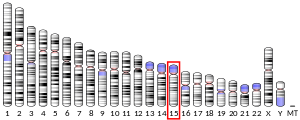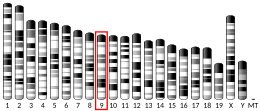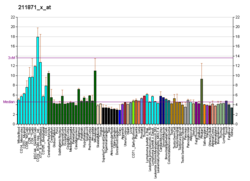| GNB5 | |||||||||||||||||||||||||||||||||||||||||||||||||||
|---|---|---|---|---|---|---|---|---|---|---|---|---|---|---|---|---|---|---|---|---|---|---|---|---|---|---|---|---|---|---|---|---|---|---|---|---|---|---|---|---|---|---|---|---|---|---|---|---|---|---|---|
| |||||||||||||||||||||||||||||||||||||||||||||||||||
| Identifiers | |||||||||||||||||||||||||||||||||||||||||||||||||||
| Aliases | GNB5, guanine nucleotide binding protein (G protein), beta 5, GB5, G protein subunit beta 5, LADCI, IDDCA, gbeta5, HG2E | ||||||||||||||||||||||||||||||||||||||||||||||||||
| External IDs | OMIM: 604447; MGI: 101848; HomoloGene: 40714; GeneCards: GNB5; OMA: GNB5 - orthologs | ||||||||||||||||||||||||||||||||||||||||||||||||||
| |||||||||||||||||||||||||||||||||||||||||||||||||||
| |||||||||||||||||||||||||||||||||||||||||||||||||||
| |||||||||||||||||||||||||||||||||||||||||||||||||||
| |||||||||||||||||||||||||||||||||||||||||||||||||||
| |||||||||||||||||||||||||||||||||||||||||||||||||||
| Wikidata | |||||||||||||||||||||||||||||||||||||||||||||||||||
| |||||||||||||||||||||||||||||||||||||||||||||||||||
Guanine nucleotide-binding protein subunit beta-5 is a protein that in humans is encoded by the GNB5 gene. [5] Alternatively spliced transcript variants encoding different isoforms exist. [6]
Heterotrimeric guanine nucleotide-binding proteins ( G proteins), which integrate signals between receptors and effector proteins, are composed of an alpha, a beta, and a gamma subunit. These subunits are encoded by families of related genes. This gene encodes a beta subunit. Beta subunits are important regulators of alpha subunits, as well as of certain signal transduction receptors and effectors. [6]
GNB5 has been shown to differentially control RGS protein stability and membrane anchor binding, and therefore is involved in the control of complex neuronal G protein signaling pathways. [7]
GNB5 has been shown to interact with:
- ^ a b c GRCh38: Ensembl release 89: ENSG00000069966 – Ensembl, May 2017
- ^ a b c GRCm38: Ensembl release 89: ENSMUSG00000032192 – Ensembl, May 2017
- ^ "Human PubMed Reference:". National Center for Biotechnology Information, U.S. National Library of Medicine.
- ^ "Mouse PubMed Reference:". National Center for Biotechnology Information, U.S. National Library of Medicine.
- ^ Jones PG, Lombardi SJ, Cockett MI (Jun 1998). "Cloning and tissue distribution of the human G protein beta 5 cDNA". Biochim. Biophys. Acta. 1402 (3): 288–91. doi: 10.1016/S0167-4889(98)00017-2. PMID 9606987.
- ^ a b "Entrez Gene: GNB5 guanine nucleotide binding protein (G protein), beta 5".
- ^ a b Masuho I, Wakasugi-Masuho H, Posokhova EN, Patton JR, Martemyanov KA (June 2011). "Type 5 G protein beta subunit (Gbeta5) controls the interaction of regulator of G protein signaling 9 (RGS9) with membrane anchors". J. Biol. Chem. 286 (24): 21806–13. doi: 10.1074/jbc.M111.241513. PMC 3122235. PMID 21511947.
- ^ Yan K, Kalyanaraman V, Gautam N (March 1996). "Differential ability to form the G protein betagamma complex among members of the beta and gamma subunit families". J. Biol. Chem. 271 (12): 7141–6. doi: 10.1074/jbc.271.12.7141. PMID 8636150.
- ^ Blake BL, Wing MR, Zhou JY, Lei Q, Hillmann JR, Behe CI, Morris RA, Harden TK, Bayliss DA, Miller RJ, Siderovski DP (December 2001). "G beta association and effector interaction selectivities of the divergent G gamma subunit G gamma(13)". J. Biol. Chem. 276 (52): 49267–74. doi: 10.1074/jbc.M106565200. PMID 11675383.
- ^ Levay K, Cabrera JL, Satpaev DK, Slepak VZ (March 1999). "Gbeta5 prevents the RGS7-Galphao interaction through binding to a distinct Ggamma-like domain found in RGS7 and other RGS proteins". Proc. Natl. Acad. Sci. U.S.A. 96 (5): 2503–7. Bibcode: 1999PNAS...96.2503L. doi: 10.1073/pnas.96.5.2503. PMC 26814. PMID 10051672.
- ^ Posner BA, Gilman AG, Harris BA (October 1999). "Regulators of G protein signaling 6 and 7. Purification of complexes with gbeta5 and assessment of their effects on g protein-mediated signaling pathways". J. Biol. Chem. 274 (43): 31087–93. doi: 10.1074/jbc.274.43.31087. PMID 10521509.
- Downes GB, Gautam N (1999). "The G protein subunit gene families". Genomics. 62 (3): 544–52. doi: 10.1006/geno.1999.5992. PMID 10644457.
- Yan K, Kalyanaraman V, Gautam N (1996). "Differential ability to form the G protein betagamma complex among members of the beta and gamma subunit families". J. Biol. Chem. 271 (12): 7141–6. doi: 10.1074/jbc.271.12.7141. PMID 8636150.
- Watson AJ, Aragay AM, Slepak VZ, Simon MI (1996). "A novel form of the G protein beta subunit Gbeta5 is specifically expressed in the vertebrate retina". J. Biol. Chem. 271 (45): 28154–60. doi: 10.1074/jbc.271.45.28154. PMID 8910430.
- Gold SJ, Ni YG, Dohlman HG, Nestler EJ (1997). "Regulators of G-protein signaling (RGS) proteins: region-specific expression of nine subtypes in rat brain". J. Neurosci. 17 (20): 8024–37. doi: 10.1523/JNEUROSCI.17-20-08024.1997. PMC 6793903. PMID 9315921.
- Snow BE, Krumins AM, Brothers GM, Lee SF, Wall MA, Chung S, Mangion J, Arya S, Gilman AG, Siderovski DP (1998). "A G protein gamma subunit-like domain shared between RGS11 and other RGS proteins specifies binding to Gbeta5 subunits". Proc. Natl. Acad. Sci. U.S.A. 95 (22): 13307–12. Bibcode: 1998PNAS...9513307S. doi: 10.1073/pnas.95.22.13307. PMC 23793. PMID 9789084.
- Levay K, Cabrera JL, Satpaev DK, Slepak VZ (1999). "Gbeta5 prevents the RGS7-Galphao interaction through binding to a distinct Ggamma-like domain found in RGS7 and other RGS proteins". Proc. Natl. Acad. Sci. U.S.A. 96 (5): 2503–7. Bibcode: 1999PNAS...96.2503L. doi: 10.1073/pnas.96.5.2503. PMC 26814. PMID 10051672.
- Snow BE, Betts L, Mangion J, Sondek J, Siderovski DP (1999). "Fidelity of G protein beta-subunit association by the G protein gamma-subunit-like domains of RGS6, RGS7, and RGS11". Proc. Natl. Acad. Sci. U.S.A. 96 (11): 6489–94. Bibcode: 1999PNAS...96.6489S. doi: 10.1073/pnas.96.11.6489. PMC 26909. PMID 10339615.
- Posner BA, Gilman AG, Harris BA (1999). "Regulators of G protein signaling 6 and 7. Purification of complexes with gbeta5 and assessment of their effects on g protein-mediated signaling pathways". J. Biol. Chem. 274 (43): 31087–93. doi: 10.1074/jbc.274.43.31087. PMID 10521509.
- Hartley JL, Temple GF, Brasch MA (2000). "DNA cloning using in vitro site-specific recombination". Genome Res. 10 (11): 1788–95. doi: 10.1101/gr.143000. PMC 310948. PMID 11076863.
- Wiemann S, Weil B, Wellenreuther R, Gassenhuber J, Glassl S, Ansorge W, Böcher M, Blöcker H, Bauersachs S, Blum H, Lauber J, Düsterhöft A, Beyer A, Köhrer K, Strack N, Mewes HW, Ottenwälder B, Obermaier B, Tampe J, Heubner D, Wambutt R, Korn B, Klein M, Poustka A (2001). "Toward a catalog of human genes and proteins: sequencing and analysis of 500 novel complete protein coding human cDNAs". Genome Res. 11 (3): 422–35. doi: 10.1101/gr.GR1547R. PMC 311072. PMID 11230166.
- Simpson JC, Wellenreuther R, Poustka A, Pepperkok R, Wiemann S (2000). "Systematic subcellular localization of novel proteins identified by large-scale cDNA sequencing". EMBO Rep. 1 (3): 287–92. doi: 10.1093/embo-reports/kvd058. PMC 1083732. PMID 11256614.
- Blake BL, Wing MR, Zhou JY, Lei Q, Hillmann JR, Behe CI, Morris RA, Harden TK, Bayliss DA, Miller RJ, Siderovski DP (2001). "G beta association and effector interaction selectivities of the divergent G gamma subunit G gamma(13)". J. Biol. Chem. 276 (52): 49267–74. doi: 10.1074/jbc.M106565200. PMID 11675383.
- Hu G, Wensel TG (2002). "R9AP, a membrane anchor for the photoreceptor GTPase accelerating protein, RGS9-1". Proc. Natl. Acad. Sci. U.S.A. 99 (15): 9755–60. Bibcode: 2002PNAS...99.9755H. doi: 10.1073/pnas.152094799. PMC 125004. PMID 12119397.
- Ajit SK, Young KH (2004). "Enhancement of pheromone response by RGS9 and Gbeta5 in yeast". Biochem. Biophys. Res. Commun. 324 (2): 686–91. doi: 10.1016/j.bbrc.2004.09.100. PMID 15474482.
- Wiemann S, Arlt D, Huber W, Wellenreuther R, Schleeger S, Mehrle A, Bechtel S, Sauermann M, Korf U, Pepperkok R, Sültmann H, Poustka A (2004). "From ORFeome to biology: a functional genomics pipeline". Genome Res. 14 (10B): 2136–44. doi: 10.1101/gr.2576704. PMC 528930. PMID 15489336.
| GNB5 | |||||||||||||||||||||||||||||||||||||||||||||||||||
|---|---|---|---|---|---|---|---|---|---|---|---|---|---|---|---|---|---|---|---|---|---|---|---|---|---|---|---|---|---|---|---|---|---|---|---|---|---|---|---|---|---|---|---|---|---|---|---|---|---|---|---|
| |||||||||||||||||||||||||||||||||||||||||||||||||||
| Identifiers | |||||||||||||||||||||||||||||||||||||||||||||||||||
| Aliases | GNB5, guanine nucleotide binding protein (G protein), beta 5, GB5, G protein subunit beta 5, LADCI, IDDCA, gbeta5, HG2E | ||||||||||||||||||||||||||||||||||||||||||||||||||
| External IDs | OMIM: 604447; MGI: 101848; HomoloGene: 40714; GeneCards: GNB5; OMA: GNB5 - orthologs | ||||||||||||||||||||||||||||||||||||||||||||||||||
| |||||||||||||||||||||||||||||||||||||||||||||||||||
| |||||||||||||||||||||||||||||||||||||||||||||||||||
| |||||||||||||||||||||||||||||||||||||||||||||||||||
| |||||||||||||||||||||||||||||||||||||||||||||||||||
| |||||||||||||||||||||||||||||||||||||||||||||||||||
| Wikidata | |||||||||||||||||||||||||||||||||||||||||||||||||||
| |||||||||||||||||||||||||||||||||||||||||||||||||||
Guanine nucleotide-binding protein subunit beta-5 is a protein that in humans is encoded by the GNB5 gene. [5] Alternatively spliced transcript variants encoding different isoforms exist. [6]
Heterotrimeric guanine nucleotide-binding proteins ( G proteins), which integrate signals between receptors and effector proteins, are composed of an alpha, a beta, and a gamma subunit. These subunits are encoded by families of related genes. This gene encodes a beta subunit. Beta subunits are important regulators of alpha subunits, as well as of certain signal transduction receptors and effectors. [6]
GNB5 has been shown to differentially control RGS protein stability and membrane anchor binding, and therefore is involved in the control of complex neuronal G protein signaling pathways. [7]
GNB5 has been shown to interact with:
- ^ a b c GRCh38: Ensembl release 89: ENSG00000069966 – Ensembl, May 2017
- ^ a b c GRCm38: Ensembl release 89: ENSMUSG00000032192 – Ensembl, May 2017
- ^ "Human PubMed Reference:". National Center for Biotechnology Information, U.S. National Library of Medicine.
- ^ "Mouse PubMed Reference:". National Center for Biotechnology Information, U.S. National Library of Medicine.
- ^ Jones PG, Lombardi SJ, Cockett MI (Jun 1998). "Cloning and tissue distribution of the human G protein beta 5 cDNA". Biochim. Biophys. Acta. 1402 (3): 288–91. doi: 10.1016/S0167-4889(98)00017-2. PMID 9606987.
- ^ a b "Entrez Gene: GNB5 guanine nucleotide binding protein (G protein), beta 5".
- ^ a b Masuho I, Wakasugi-Masuho H, Posokhova EN, Patton JR, Martemyanov KA (June 2011). "Type 5 G protein beta subunit (Gbeta5) controls the interaction of regulator of G protein signaling 9 (RGS9) with membrane anchors". J. Biol. Chem. 286 (24): 21806–13. doi: 10.1074/jbc.M111.241513. PMC 3122235. PMID 21511947.
- ^ Yan K, Kalyanaraman V, Gautam N (March 1996). "Differential ability to form the G protein betagamma complex among members of the beta and gamma subunit families". J. Biol. Chem. 271 (12): 7141–6. doi: 10.1074/jbc.271.12.7141. PMID 8636150.
- ^ Blake BL, Wing MR, Zhou JY, Lei Q, Hillmann JR, Behe CI, Morris RA, Harden TK, Bayliss DA, Miller RJ, Siderovski DP (December 2001). "G beta association and effector interaction selectivities of the divergent G gamma subunit G gamma(13)". J. Biol. Chem. 276 (52): 49267–74. doi: 10.1074/jbc.M106565200. PMID 11675383.
- ^ Levay K, Cabrera JL, Satpaev DK, Slepak VZ (March 1999). "Gbeta5 prevents the RGS7-Galphao interaction through binding to a distinct Ggamma-like domain found in RGS7 and other RGS proteins". Proc. Natl. Acad. Sci. U.S.A. 96 (5): 2503–7. Bibcode: 1999PNAS...96.2503L. doi: 10.1073/pnas.96.5.2503. PMC 26814. PMID 10051672.
- ^ Posner BA, Gilman AG, Harris BA (October 1999). "Regulators of G protein signaling 6 and 7. Purification of complexes with gbeta5 and assessment of their effects on g protein-mediated signaling pathways". J. Biol. Chem. 274 (43): 31087–93. doi: 10.1074/jbc.274.43.31087. PMID 10521509.
- Downes GB, Gautam N (1999). "The G protein subunit gene families". Genomics. 62 (3): 544–52. doi: 10.1006/geno.1999.5992. PMID 10644457.
- Yan K, Kalyanaraman V, Gautam N (1996). "Differential ability to form the G protein betagamma complex among members of the beta and gamma subunit families". J. Biol. Chem. 271 (12): 7141–6. doi: 10.1074/jbc.271.12.7141. PMID 8636150.
- Watson AJ, Aragay AM, Slepak VZ, Simon MI (1996). "A novel form of the G protein beta subunit Gbeta5 is specifically expressed in the vertebrate retina". J. Biol. Chem. 271 (45): 28154–60. doi: 10.1074/jbc.271.45.28154. PMID 8910430.
- Gold SJ, Ni YG, Dohlman HG, Nestler EJ (1997). "Regulators of G-protein signaling (RGS) proteins: region-specific expression of nine subtypes in rat brain". J. Neurosci. 17 (20): 8024–37. doi: 10.1523/JNEUROSCI.17-20-08024.1997. PMC 6793903. PMID 9315921.
- Snow BE, Krumins AM, Brothers GM, Lee SF, Wall MA, Chung S, Mangion J, Arya S, Gilman AG, Siderovski DP (1998). "A G protein gamma subunit-like domain shared between RGS11 and other RGS proteins specifies binding to Gbeta5 subunits". Proc. Natl. Acad. Sci. U.S.A. 95 (22): 13307–12. Bibcode: 1998PNAS...9513307S. doi: 10.1073/pnas.95.22.13307. PMC 23793. PMID 9789084.
- Levay K, Cabrera JL, Satpaev DK, Slepak VZ (1999). "Gbeta5 prevents the RGS7-Galphao interaction through binding to a distinct Ggamma-like domain found in RGS7 and other RGS proteins". Proc. Natl. Acad. Sci. U.S.A. 96 (5): 2503–7. Bibcode: 1999PNAS...96.2503L. doi: 10.1073/pnas.96.5.2503. PMC 26814. PMID 10051672.
- Snow BE, Betts L, Mangion J, Sondek J, Siderovski DP (1999). "Fidelity of G protein beta-subunit association by the G protein gamma-subunit-like domains of RGS6, RGS7, and RGS11". Proc. Natl. Acad. Sci. U.S.A. 96 (11): 6489–94. Bibcode: 1999PNAS...96.6489S. doi: 10.1073/pnas.96.11.6489. PMC 26909. PMID 10339615.
- Posner BA, Gilman AG, Harris BA (1999). "Regulators of G protein signaling 6 and 7. Purification of complexes with gbeta5 and assessment of their effects on g protein-mediated signaling pathways". J. Biol. Chem. 274 (43): 31087–93. doi: 10.1074/jbc.274.43.31087. PMID 10521509.
- Hartley JL, Temple GF, Brasch MA (2000). "DNA cloning using in vitro site-specific recombination". Genome Res. 10 (11): 1788–95. doi: 10.1101/gr.143000. PMC 310948. PMID 11076863.
- Wiemann S, Weil B, Wellenreuther R, Gassenhuber J, Glassl S, Ansorge W, Böcher M, Blöcker H, Bauersachs S, Blum H, Lauber J, Düsterhöft A, Beyer A, Köhrer K, Strack N, Mewes HW, Ottenwälder B, Obermaier B, Tampe J, Heubner D, Wambutt R, Korn B, Klein M, Poustka A (2001). "Toward a catalog of human genes and proteins: sequencing and analysis of 500 novel complete protein coding human cDNAs". Genome Res. 11 (3): 422–35. doi: 10.1101/gr.GR1547R. PMC 311072. PMID 11230166.
- Simpson JC, Wellenreuther R, Poustka A, Pepperkok R, Wiemann S (2000). "Systematic subcellular localization of novel proteins identified by large-scale cDNA sequencing". EMBO Rep. 1 (3): 287–92. doi: 10.1093/embo-reports/kvd058. PMC 1083732. PMID 11256614.
- Blake BL, Wing MR, Zhou JY, Lei Q, Hillmann JR, Behe CI, Morris RA, Harden TK, Bayliss DA, Miller RJ, Siderovski DP (2001). "G beta association and effector interaction selectivities of the divergent G gamma subunit G gamma(13)". J. Biol. Chem. 276 (52): 49267–74. doi: 10.1074/jbc.M106565200. PMID 11675383.
- Hu G, Wensel TG (2002). "R9AP, a membrane anchor for the photoreceptor GTPase accelerating protein, RGS9-1". Proc. Natl. Acad. Sci. U.S.A. 99 (15): 9755–60. Bibcode: 2002PNAS...99.9755H. doi: 10.1073/pnas.152094799. PMC 125004. PMID 12119397.
- Ajit SK, Young KH (2004). "Enhancement of pheromone response by RGS9 and Gbeta5 in yeast". Biochem. Biophys. Res. Commun. 324 (2): 686–91. doi: 10.1016/j.bbrc.2004.09.100. PMID 15474482.
- Wiemann S, Arlt D, Huber W, Wellenreuther R, Schleeger S, Mehrle A, Bechtel S, Sauermann M, Korf U, Pepperkok R, Sültmann H, Poustka A (2004). "From ORFeome to biology: a functional genomics pipeline". Genome Res. 14 (10B): 2136–44. doi: 10.1101/gr.2576704. PMC 528930. PMID 15489336.






